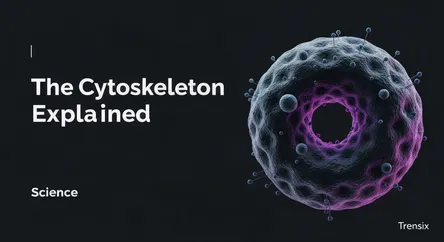Science
The Cytoskeleton Explained

Discover the cytoskeleton, the intricate network of protein filaments that provides structure, support, and movement to eukaryotic cells.
What is it?
The cytoskeleton is a dynamic and complex network of protein filaments found in the cytoplasm of all eukaryotic cells. Far from being a static scaffold, it's more like a cell's internal 'skeleton and muscle' system combined. It is primarily composed of three types of filaments: microtubules, actin filaments (or microfilaments), and intermediate filaments. Together, these components provide structural support, determine cell shape, organize the contents of the cell, and enable cellular movement and division. It's the machinery behind everything from a muscle cell contracting to an immune cell chasing a bacterium.
Why is it trending?
Research into the cytoskeleton is experiencing a surge due to its critical role in major diseases and advancements in imaging technology. Scientists are increasingly linking cytoskeletal defects to cancer, neurodegenerative disorders like Alzheimer's, and cardiovascular disease. Super-resolution microscopy now allows researchers to visualize the cytoskeleton's intricate dance in real-time, offering unprecedented insights. This focus is driven by the potential to develop novel therapies that target cytoskeletal components to halt disease progression, particularly in cancer metastasis where cell motility is key.
How does it affect people?
The cytoskeleton's function is fundamental to human health. When its components malfunction, it can lead to a host of diseases. For example, defects in cytoskeletal proteins are linked to certain forms of muscular dystrophy and inherited heart conditions. In cancer, the cytoskeleton is hijacked by tumor cells to enable them to migrate and spread throughout the body (metastasize). Therefore, a deeper understanding of this cellular network is crucial for developing new drugs that can inhibit cancer cell movement or correct structural defects, directly impacting the treatment and prevention of numerous human ailments.